Classes we used to sail
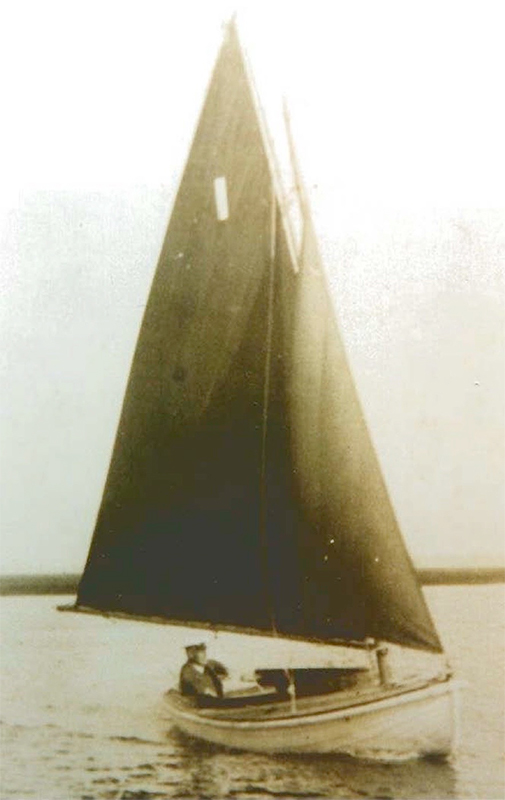
Capt HH Nicholson in the first Lymington Pram
How it all began
It all began with a few Members who wanted to race their Lymington Pram 14 foot dinghies and the more widely sailed Solent Seabird 18 footers, together with a handicap class for other boats. From those origins, sailing and, more specifically, racing grew. Over the years, faster, smaller and more affordable boats meant that sailing was taken up by a wider group of Members. Alongside the dinghies, keel boats formed a strong and enduring core of both Club racing and cruising. Classes still extant are dealt with on other pages, notably the XOD and the Lymington Scow both of which go back to the origins of the Club.
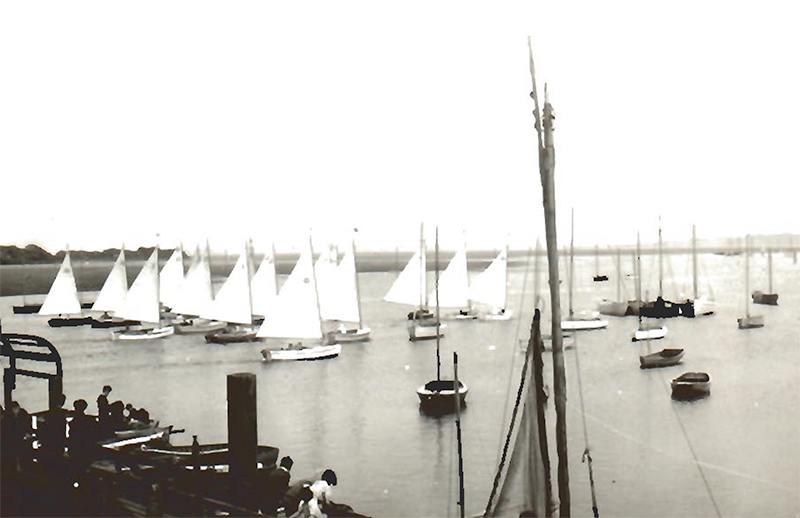
Lymington Prams on the river
Early popular boats raced
Amongst classes popular with the Club in years gone by, are some that are scarcely seen today. Others, that have been superseded in their popularity are nevertheless still sailed, widely, including the National 12, Firefly and Finn classes. Perhaps deserving of mention, above all, is the Lymington Pram (above): these dinghies formed the backbone of the club for nearly 50 years. They epitomised why the club was formed and defined its nature; the boats were raced but were also the everyday boats of Members, who would take part in pursuit races to pleasant and (at that time) deserted anchorages, where picnics would be had; convivial gatherings and cruises took an equal part with river racing. The white yachting cap seemed to have been obligatory! Large numbers of prams were still being sailed into the 1960s but, as some drifted their moorings more towards Keyhaven, the fleet split up and class racing diminished – it did not even feature in the Centenary of the Town Regatta, in 1975.
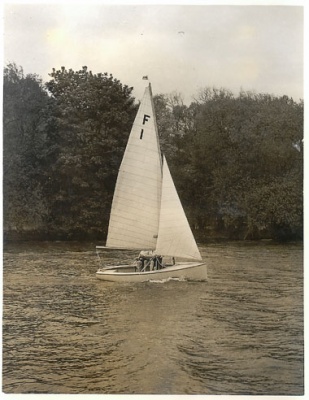
Firefly F1
Planing Boats
Perhaps the most significant development in the Club’s dinghy racing are the lighter, classes of planing boats, through which Members have progressed into today’s dinghies that are campaigned internationally. Thereby hangs both the stimulus and the decline of some classes, within the club. The smaller craft were affordable and provided exciting sailing: they could easily be transported to meets elsewhere, and the demand for both home and away competitions encouraged their growth in numbers but that depleted the numbers racing at home. Within the club, some notable sailing celebrities have emerged and gone on to great things. That success also had its drawbacks – imagine trailing the same superb helmsmen and crew, week after week – but then as those paragons of success found their sailing further afield, with national and international competitions – so, the home-based classes declined. Nevertheless, as the racing stars progressed, they would go up a class and introduce a new design to the club, which then took root, as other Members acquired them and benefited from the high-class competition.
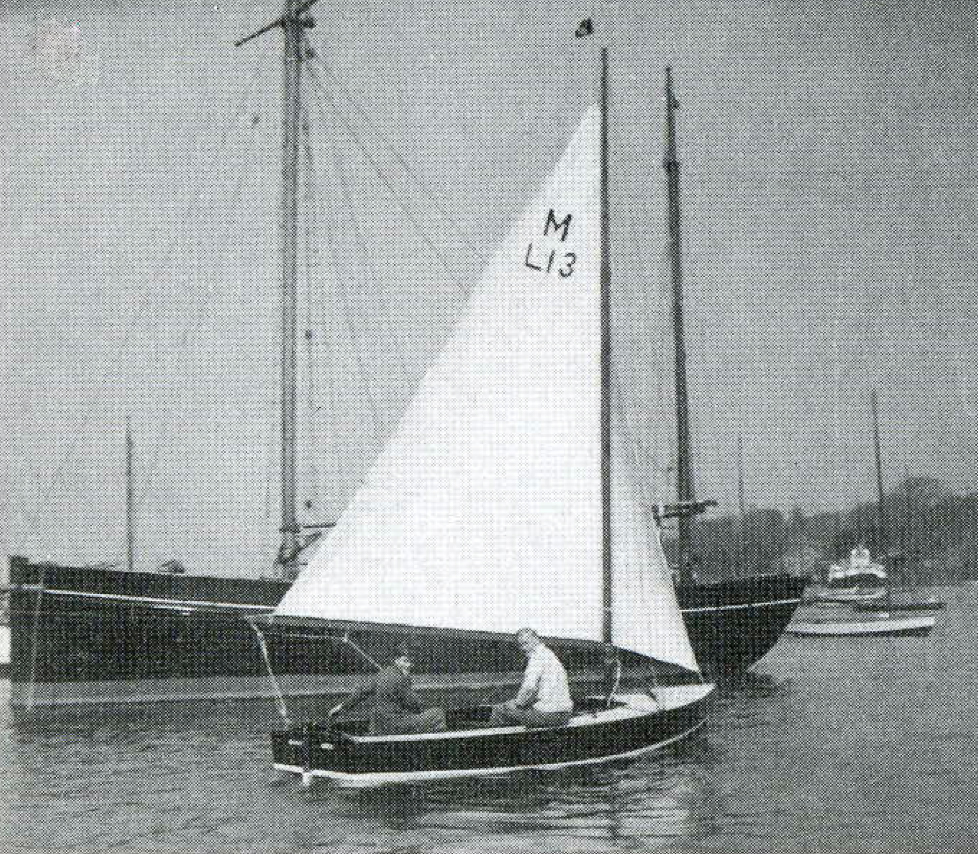
Montagu Sharpie
Before WWII – the Montagu Sharpie
Dinghy racing pre-WWII, other than the Prams or Scows, mostly featured the Montagu Sharpie, a 16ft, heavy, carvel-built boat, originating from Elkins’ yard in Christchurch. The Montagu attribution arose from the class being commissioned for use on the Beaulieu river. Like the Prams, they were moored on the river during the season – there being plenty of space for boats to swing to a buoy, in those days. Their heyday continued post-war and a number were to be seen moored well into the 1950s. Having names that began with an M, the class included Micawber, which was run down by the car ferry Farringford, but happily both crew-Members survived the ordeal.
The 50s and Uffa Fox
The first mention is made of the Club having Fairey Firefly dinghies was in 1950, along with the similarly sized National 12: both were lightweight and designed by Uffa Fox. The N12 had existed before the war, as a cheaper development of the International 14, and of simple clinker construction. Having designed what was originally called the Sea Swallow class, the name was changed to Firefly, when Uffa was asked by Charles Currey (uncle of Annie Littlejohn), who had joined the Fairey Marine company in 1946, to supply a design that the company could build using its hot moulded ply process. Despite being similar in characteristics, both classes flourished at the Club, well into the 1970s. In 1953, there was a large, low shed erected on what is now the car park, in which Nationals and other dinghies were stored. Some dinghies were also pulled up onto the concrete forecourt of the club, where they had easy access to the water.
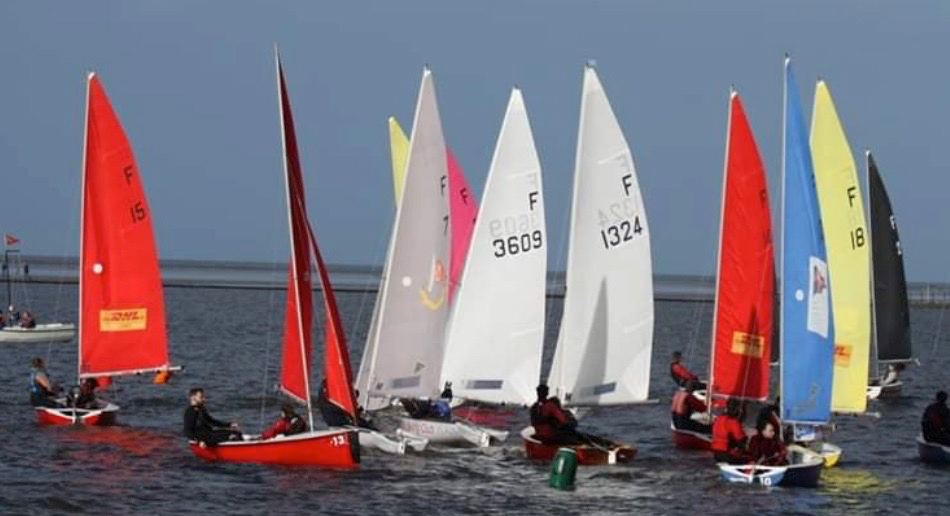
Firefly
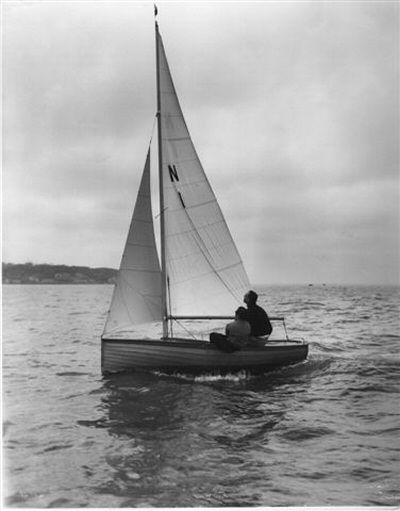
National 12
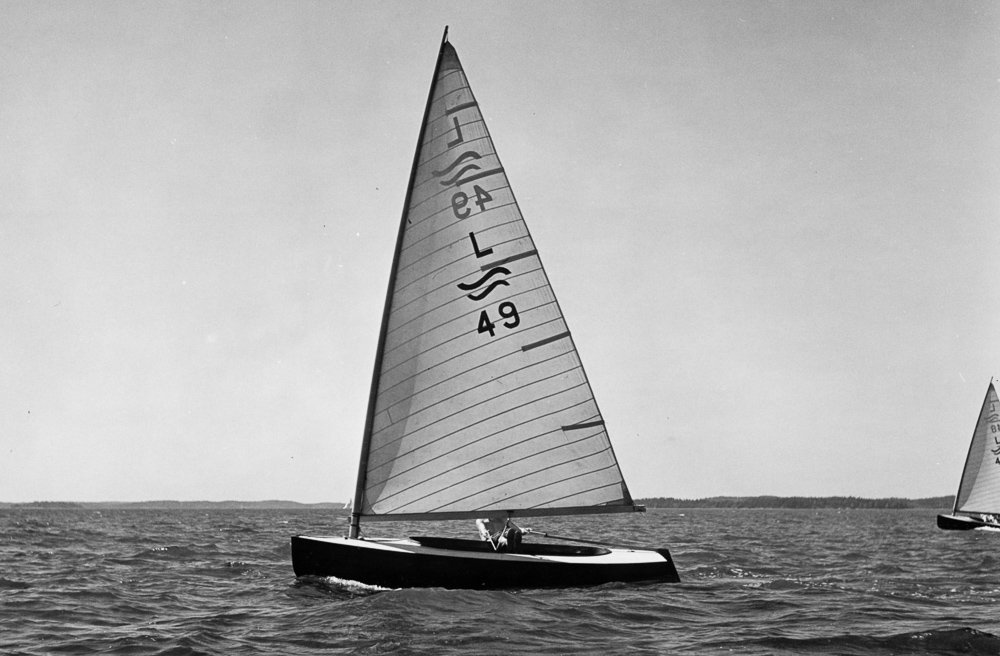
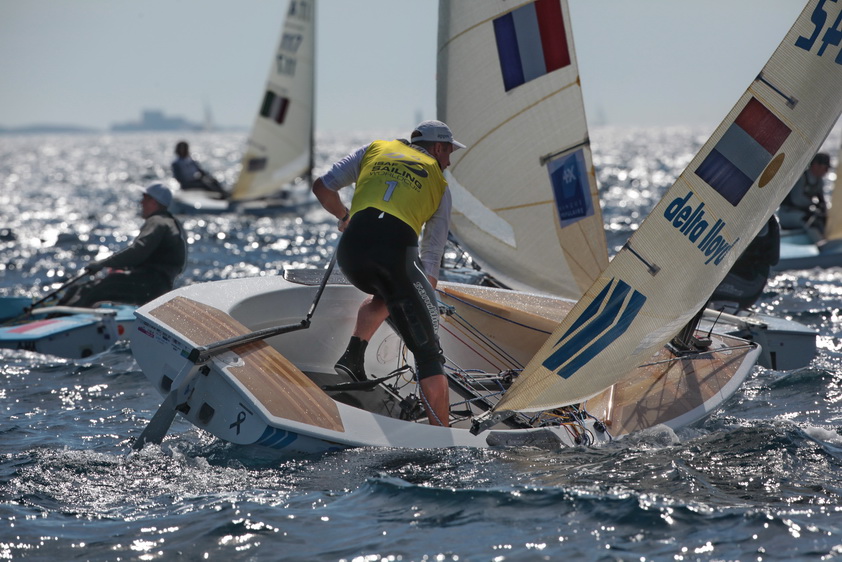
Finn Class
Members develop their racing skills and progress their boats
As the years went by, classes ebbed and flowed, as references in the Club’s Bulletin reveal. The Finn class was an example of how Members progressed up the dinghy ladder to take compete internationally, including in the Olympics. It flourished in the 1950s but, despite being a single-hander and of simple construction and rig, it was in decline by the next decade. Perhaps taking over the popularity of the Lymington Pram, the Club adopts the GP14 in 1960, providing both racing and family sailing as had its ancient predecessor. As the 1960s progressed, Finns still made the odd appearance and the N12 fleet weakened but the Fireflies went on in strength. An interesting human sidelight, around this time, was that younger Members were having challenges with life either as students or in forging their careers and this had an impact on attendance at races.

GP14
The 60s and classes change popularity
As the 1960s wore on, the not entirely unique situation arose whereby the GP14 was in decline, yet were eclipsed by their predecessors, the Prams, which still existed in some numbers. At an Easter Regatta in 1963, of the 130 boats participating, 40 were Fireflies and another 40 were Prams – ancient and modern alongside one another. Time was marching on for the Prams, however and they were seen more on organised cruises than at class racing. Similarly, although declining in numbers racing, there were still a quantity of GP14s that were sailed individually.
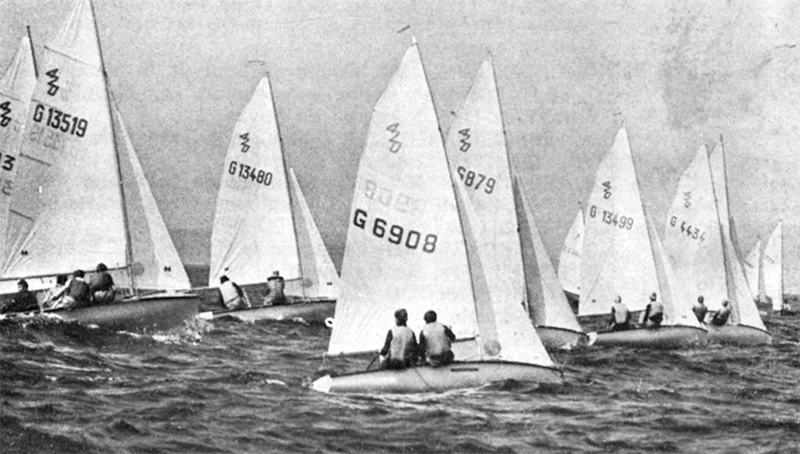
420s
The rise of the 420s
The late 1960s saw the emergence of classes favoured by the young: notably the Moths, Cadets, Scows, OKs and 420s – quite an eclectic mix. By the end of the decade, the 420 had been adopted as a Club, yet there was a further fading of more general class racing, as international and open meets attracted participation. This tendency was later to be addressed by a dedicated racing strategy and the introduction of Thursday Night Racing and other regular fixtures.
Sailing for younger Members and Thursday Night Racing
The late 1960s saw the emergence of classes favoured by the young: notably the Moths, Cadets, Scows, OKs and 420s – quite an eclectic mix. By the end of the decade, the 420 had been adopted as a Club, yet there was a further fading of more general class racing, as international and open meets attracted participation. This tendency was later to be addressed by a dedicated racing strategy and the introduction of Thursday Night Racing and other regular fixtures.
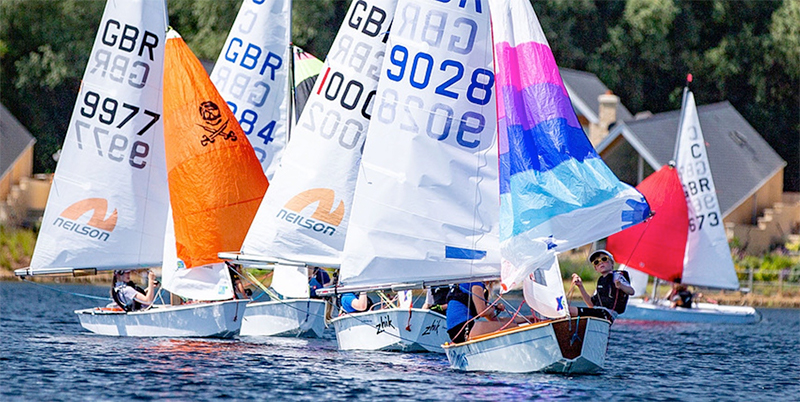
Cadets
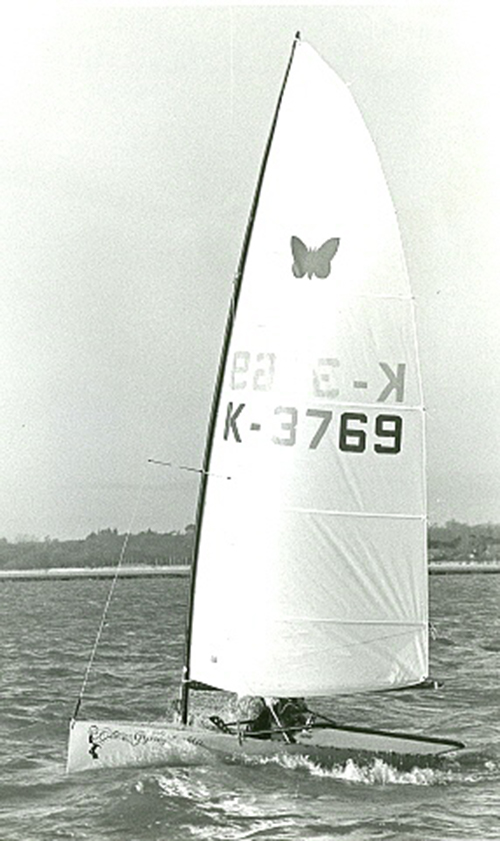
Moth
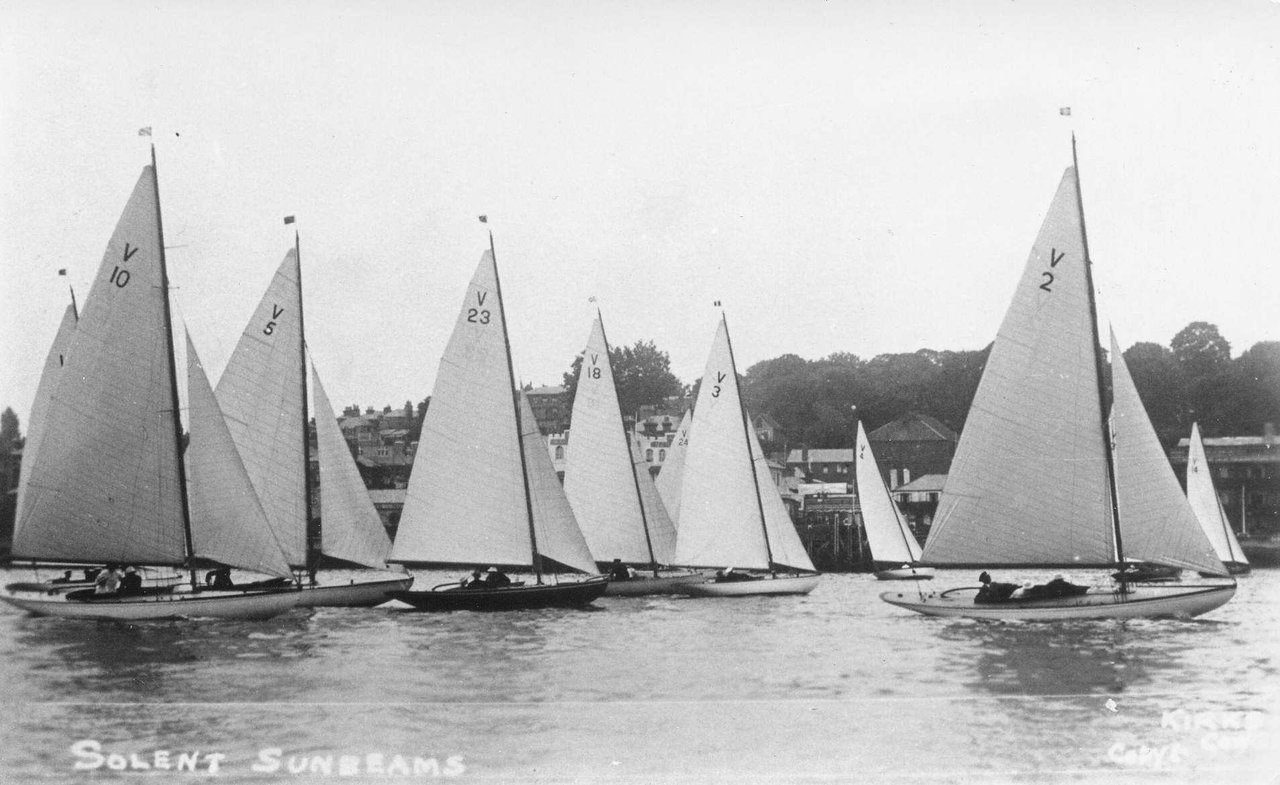
Solent Sunbeams
Keelboats – the Solent Sunbeam
Of course, the Club was started by Members who also possessed some substantial keel boats, more suitable for cruising than racing, although one of the reasons the Club was created was with racing in mind. As the Club grew and a wider range of folk joined, so too did the tastes in yachts broaden. An early class that was popular around the Solent, was the Solent Sunbeam, an open decked 26 footer. Designed by Alfred Westmacott, it resembles his other creations of the XOD and YOD but possesses an extended counter stern and protruding bow. The Sunbeams were Bermudian rigged, from the outset, unlike the originally gaff-rigged X. All 39 boats were built at Woodnutt’s yard at St Helens, IOW and they were identified by their V emblem on the sail.
West Solent Restricted and a novel feature emerges
Smaller sailing cruisers (in the 25-35 foot bracket) were desired, capable of river racing, as well as longer distance passage making. Early amongst these, alongside the ubiquitous, open-decked XOD, were the West Solent Restricted class. Designed in 1924 by H. Jacobs and H.G. May (who bought the Berthon Boat Company and brought it to Lymington), five boats were commissioned by Members of the then LYC, each with a paid hand. A novelty possessed by the WS class was a WC! This was a source of comfort but also derision, as the vessels were greeted in local ports with appropriate “chain-pulling” gestures! The class extended to 27 boats but faded as the depression of the 1930s took hold. Fleets were based elsewhere including Burnham and Torbay, where the W class emblem was modified as WB and WT respectively.
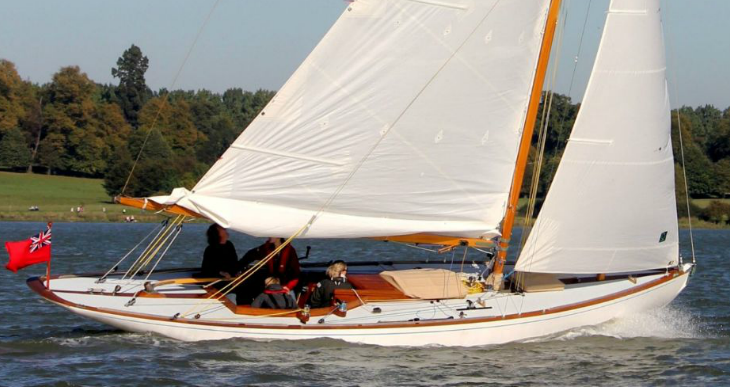

West Solent Restricted

Lymington L Class
Cruiser Racing and the Lymington L class
Cruiser-racing, really took hold before WWII, and again, the echo of picnicking, as well as racing, reflected the Club ethos. This was first satisfied in the Laurent Giles designed ‘L’ class of four tonner. A more affordable yacht, the Ls grew in numbers and were built locally; they went on to supplant the WS class, dispensing with the necessity of paid hands. At just over 23 feet long, the Ls were of a classic Laurent Giles style, that went on to be developed in to the Virtue class, still only 25 feet long but went on to distinguish themselves – and the Club – with Humphrey Barton’s crossing of the Atlantic. Back in the river, there was increasingly intensive racing of the Ls, about which, enigmatically, there is a reference in the Club archives, of a racing cause célèbre that could have led to a public scandal, had not the war intervened. The cause? An allegation of a paid skipper giving the owner in question an advantage. Cheating? Amongst gentlemen of the Royal Lymington? Surely not!
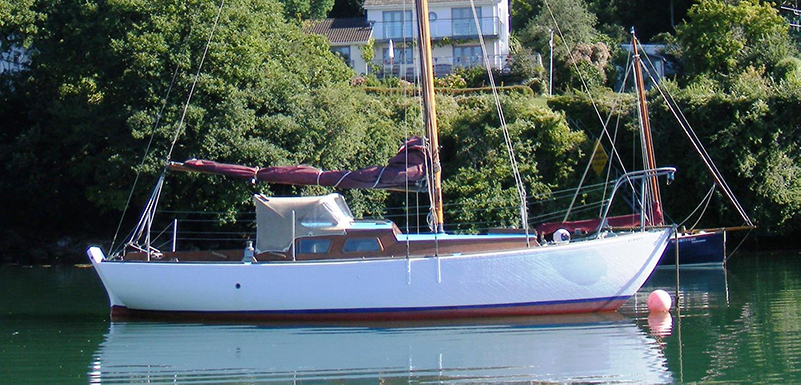
Vertue Class
Cheaper racing, the Coronation Class
If there was controversy and un-gentlemanliness surrounding those racing in the L class, then the evolution of a different class with a higher-ethos may have been the result. This was to be the Coronation class, which arrived in that eponymous year of 1937. At only 22 feet long, built at modest cost on the Clyde, they were much criticised when they arrived in Lymington, probably by those with deeper pockets. The boats survived longer than their alleged cheap-build was predicted (some to more than 80 years), but their Lymington owners transferred their loyalties to the XOD, whose ranks they strengthened.
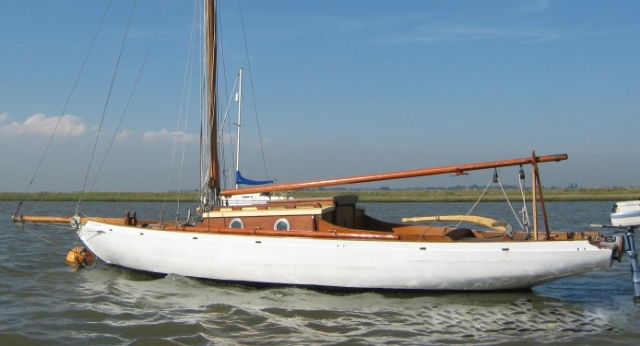
Coronation Class
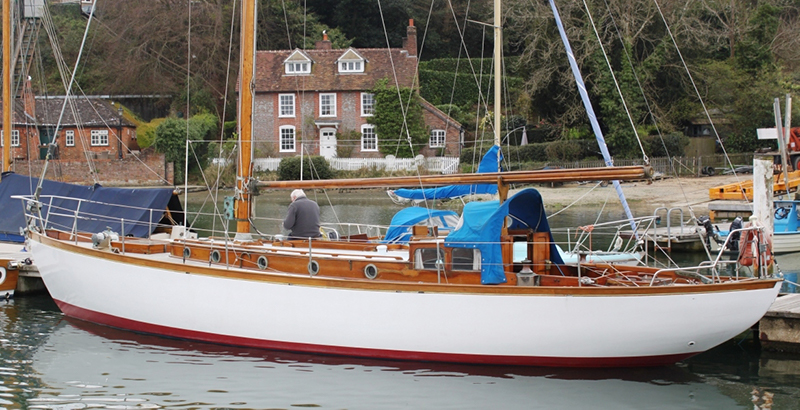
Gauntlet Class
Larger yachts for Cruiser Racing – the Gauntlet Class
A step up for the cruiser-offshore racer, came with the Gauntlet class, again from Berthon and HG May’s drawing board. These originally 12, later 14, tonners were very sound, quick and comfortable vessels as might be expected of a 41foot yacht, they had a canoe stern and justified their aim of offering offshore potential. The first vessel of the class appeared in 1934 and a number were acquired by Club Members. The larger version was created just before the war and it was the first post build of these, that was acquired by Major Bill Martineau MC, who went on to be Commodore some years later. The Members who owned Gauntlets, with their offshore cruising appetites, were said to be a breed apart, within the Club and took themselves off, when irritations like regattas intervened!
